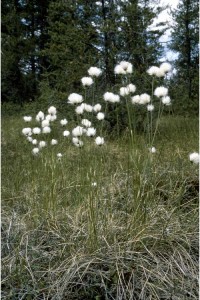
News/Reports
Galiano Island Overview, Biological and Physical
ORIGINAL PURPOSE To preserve a unique bog in the Coastal Douglas-Fir Zone
COMPOSITION
Physical: The bog, about 900 m long and 125 m wide, lies in an elongate depression
between NE-SE trending ridges of Cretaceous sedimentary rock. It has a
centrally located open-water area about 0.5 ha in size, and drains southward to
Trincomali Channel via an intermittent stream. Soils in the bog are primarily
Fibrisols and Mesisols. The climate is characterized by a winter precipitation
peak and summer drought.
See the full PDF : galiano
Biological: The predominant bog vegetation consists of ericaceous shrubs and sphagnum
moss, a wetland association that is rare in the Coastal Douglas-fir Zone. Three
 shrubby bog communities have been described: (1) Labrador tea/bog laurel-bog
shrubby bog communities have been described: (1) Labrador tea/bog laurel-bog
cranberry-sphagnum, (2) Labrador tea-beak rush-sphagnum, and (3) hardhack
stands. Herbaceous wetland types include: (4) great bulrush-common reed, (5)
slough sedge, and (6) yellow waterlily. Moist sites at the bog margin support red
alder-salmonberry-sword fern, and red alder-hardhack-slough sedge/skunk
cabbage communities. Two forested communities on rocky uplands surrounding
the bog are the Douglas-fir-arbutus-dull Oregon grape and Douglas-fir (arbutus)-
salal types. A few rocky outcrops are characterized by tall
Chamisso’s cottongrass
Oregon grape and falsebox.
Ten species of rare plants have been identified in the reserve, nine of which are
in the categories of least rarity. The other species, pointed rush, was previously
known from only five locations in the province. Regionally uncommon bog
plants found here include bog rosemary, bog cranberry, round-leaved sundew,
Chamisso’s cottongrass and arctic starflower.
Beaver are present and periodically dam the outlet stream, causing variations in
water levels in the bog. Faunal surveys have not been done.
SIGNIFICANT SPECIES/COMMUNITIES
lodgepole pine – peat-moss association —- Red Listed
bog cranberry
Chamisso’s cotton-grass
Labrador tea
pointed rush— Blue listed
round-leaved sundew
Beaver
Threats:
Climate Change: Bogs have been assessed as vulnerable to climate change due to
projected changes in hydrology and increasing temperatures, both
of which may contribute to altered water levels and quality and
subsequent shifts in community composition.
Flora
alder, red (Alnus rubra)
arbutus (Arbutus menziesii)
beak-rush, white (Rhynchospora alba)
bog-laurel, western (Kalmia microphylla)
broom, Scotch (Cytisus scoparius)
bulrush, soft-stemmed (aka great bulrush) (Schoenoplectus tabernaemontani)
cabbage, skunk (Lysichiton americanus)
cotton-grass, Chamisso’s (Eriophorum chamissonis)
cranberry, bog (Oxycoccos oxycoccos)
Douglas-fir, coast (Pseudotsuga menziesii var. menziesii)
falsebox (Paxistima myrsinites)
fern, sword (Polystichum munitum)
hardhack (Spiraea douglasii ssp. douglasii)
Labrador tea (Ledum groenlandicum)
moss, peat (Sphagnum spp.)
Oregon-grape, dull (Mahonia nervosa)
Oregon-grape, tall (Mahonia aquifolium)
pine, lodgepole (Pinus contorta var. latifolia)
reed, common (Phragmites australis ssp. australis)
rosemary, bog (Andromeda polifolia)
rush, pointed (Juncus oxymeris)
salal (Gaultheria shallon)
salmonberry (Rubus spectabilis)
sedge, slough (Carex obnupta)
starflower, arctic (Trientalis europaea ssp. arctica)
sundew, round-leaved (Drosera rotundifolia var. rotundifolia)
waterlily, yellow (Nymphaea mexicana)
Fauna
Beaver, American (Castor canadensis)
